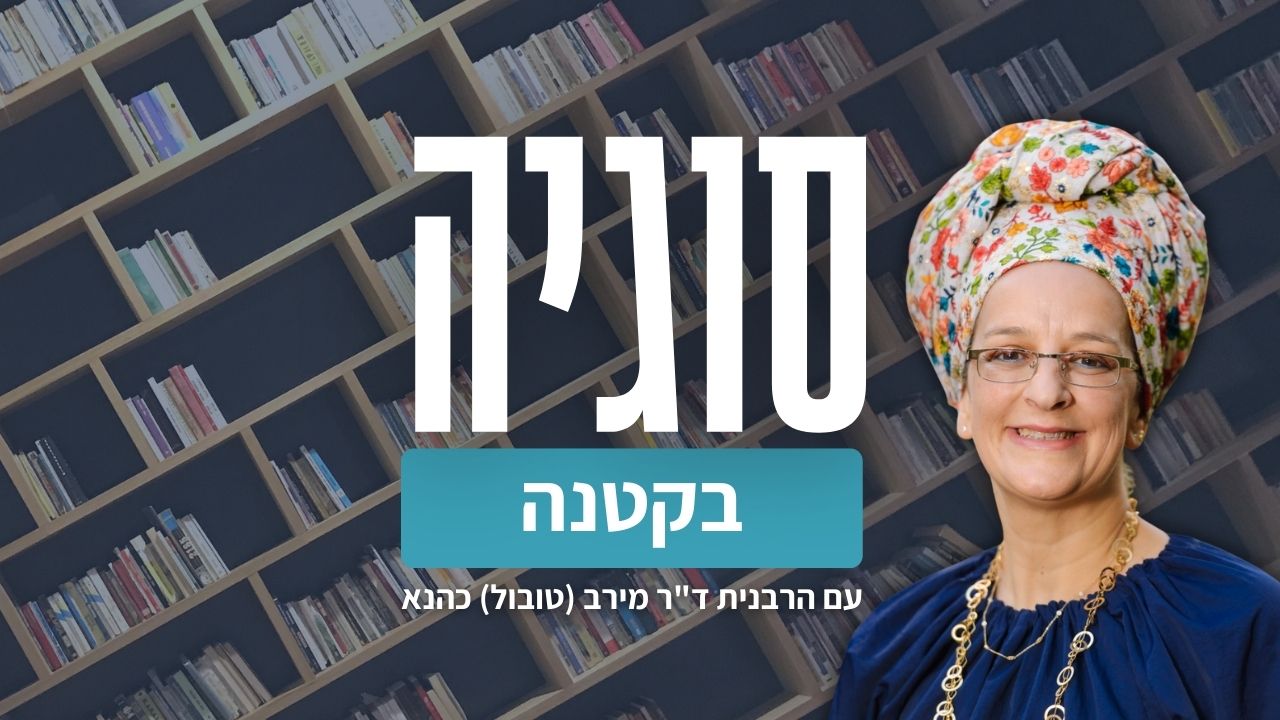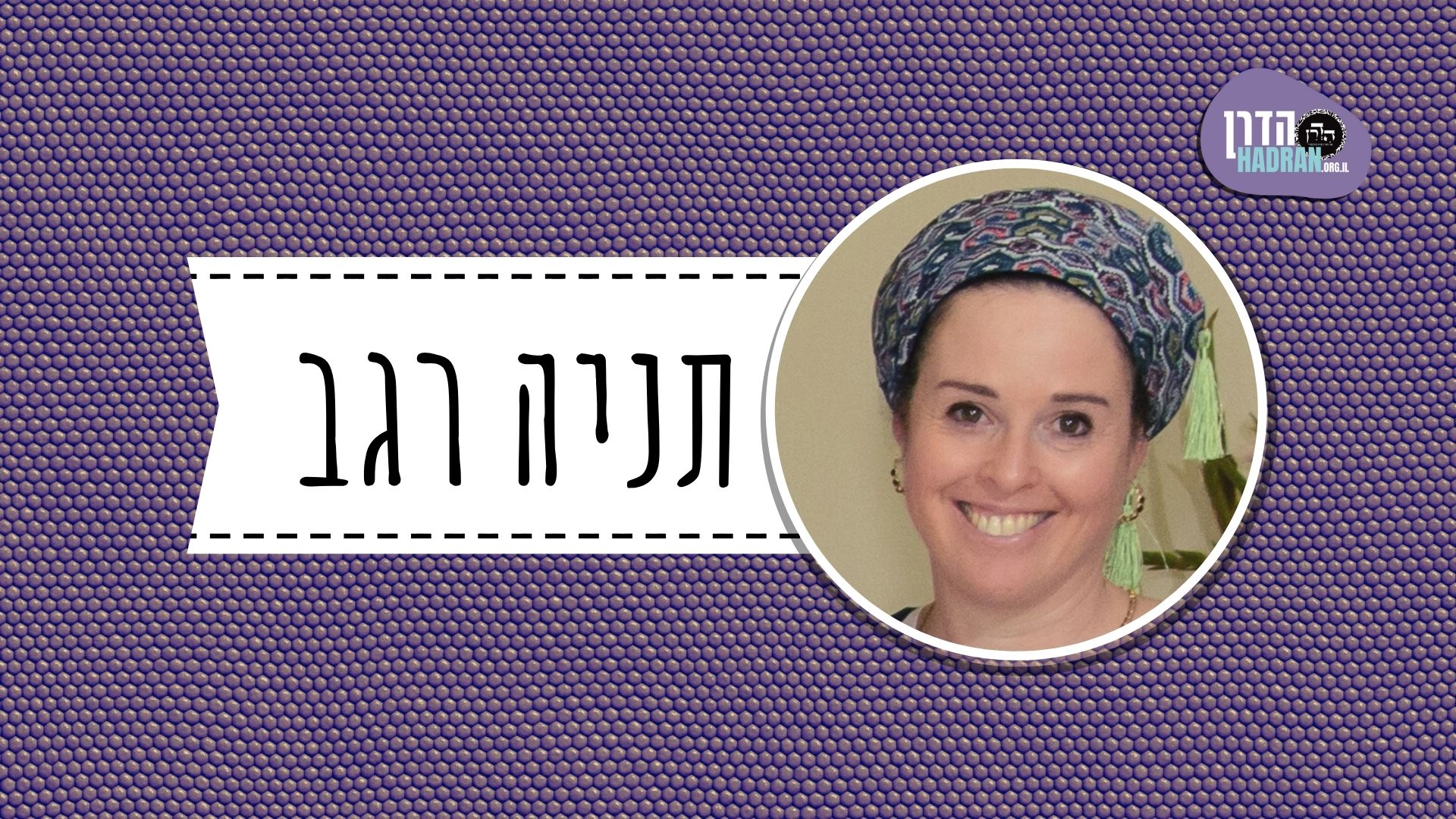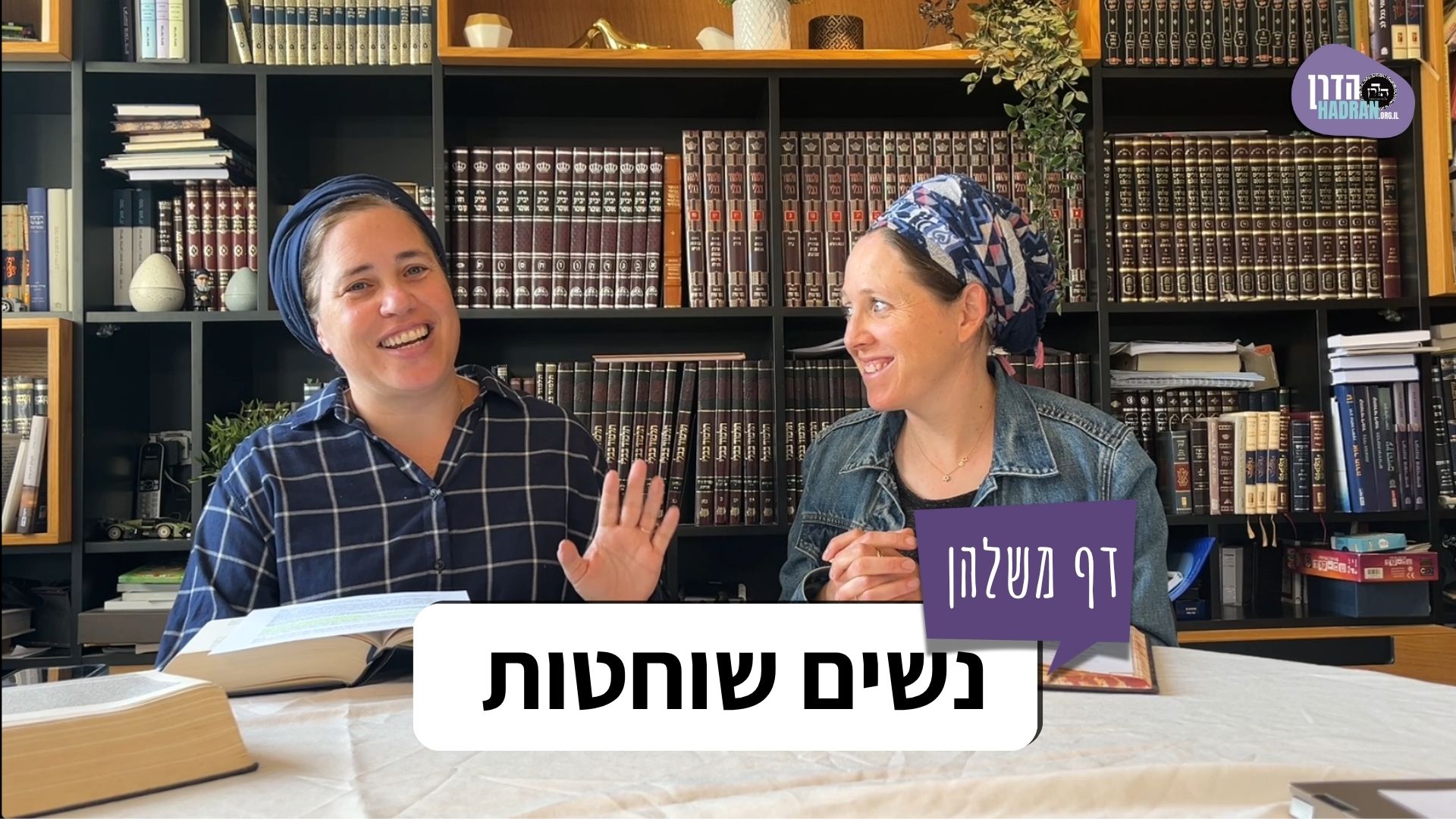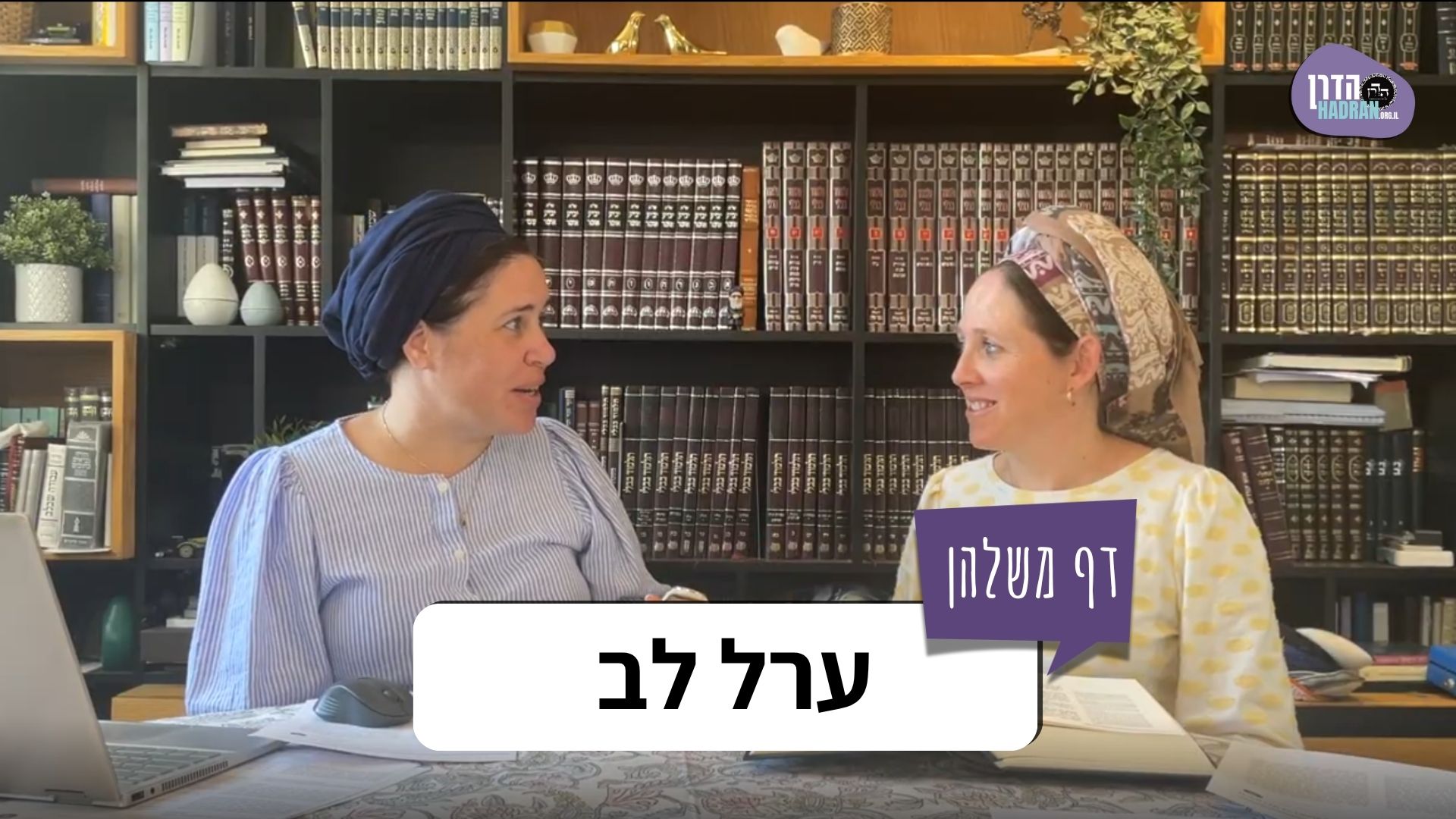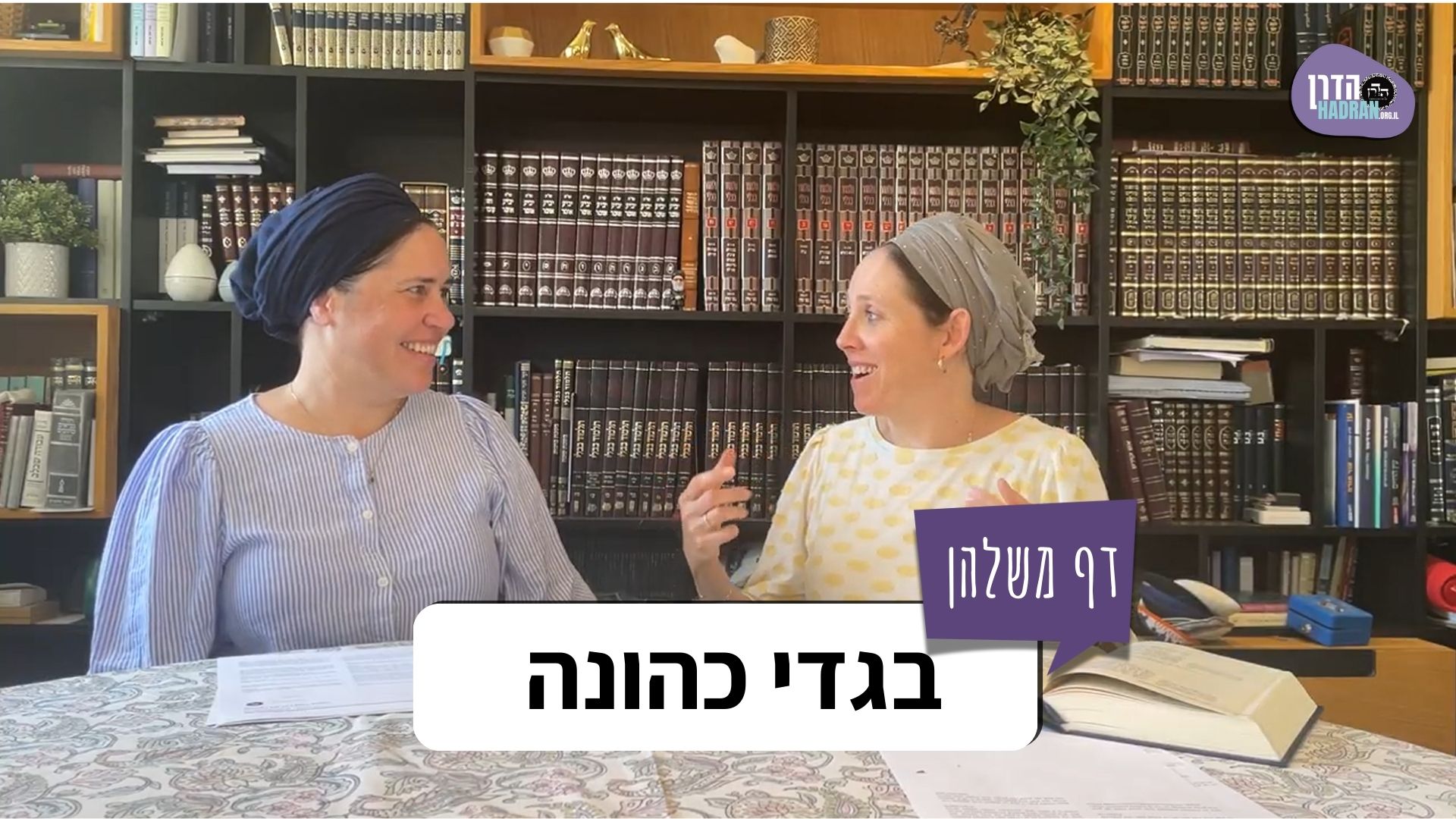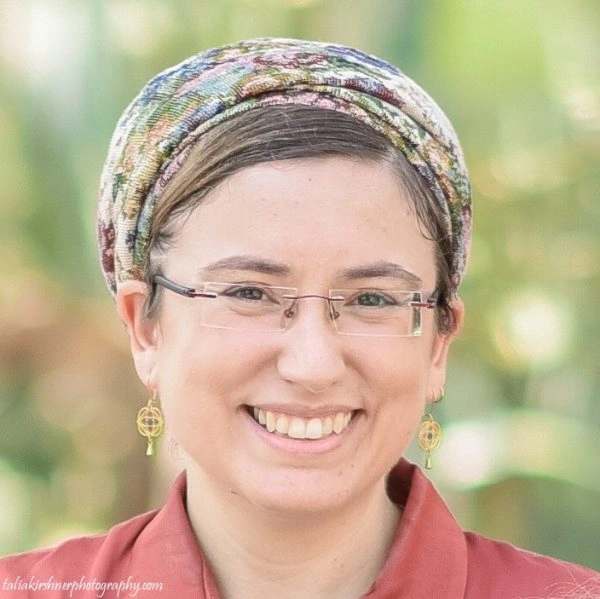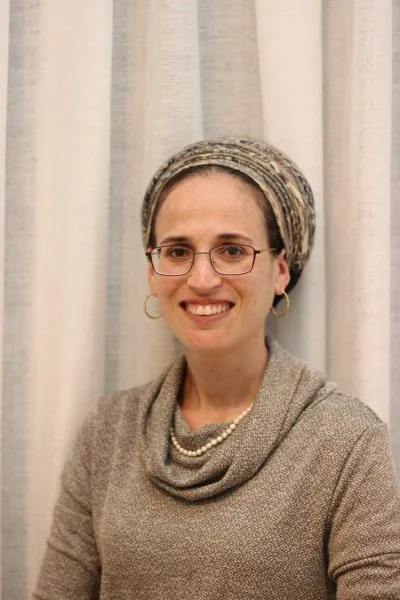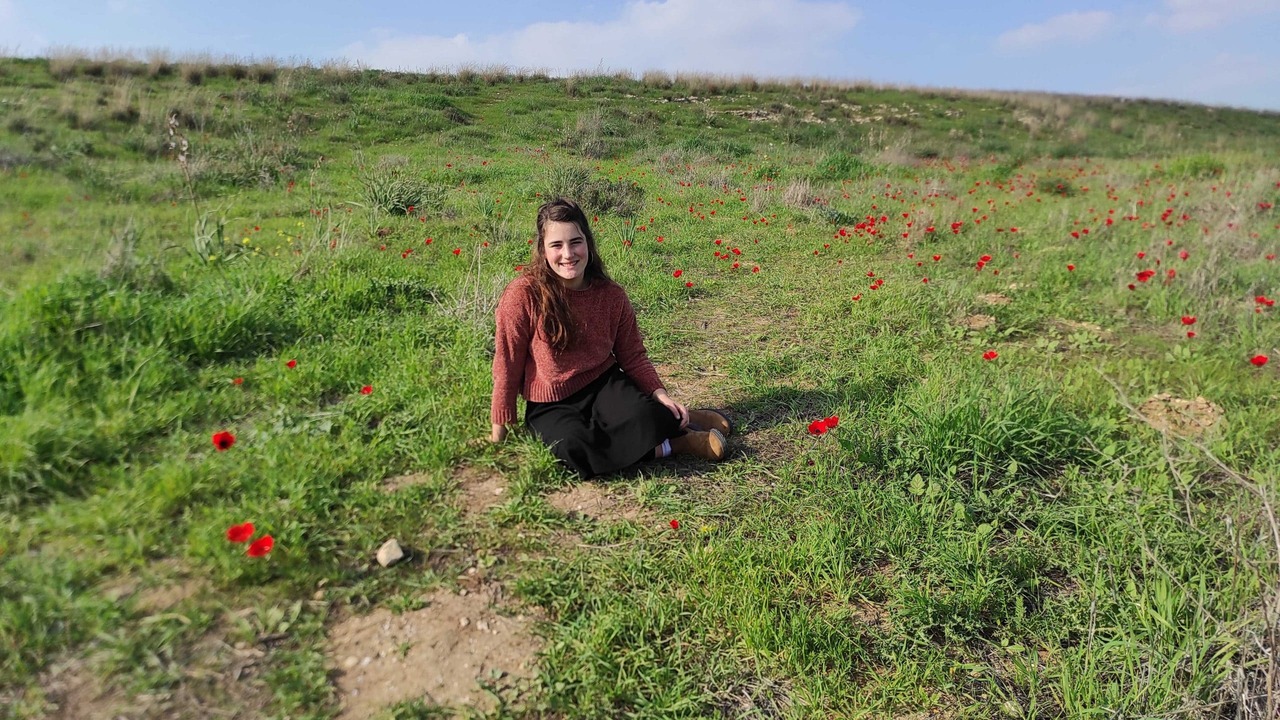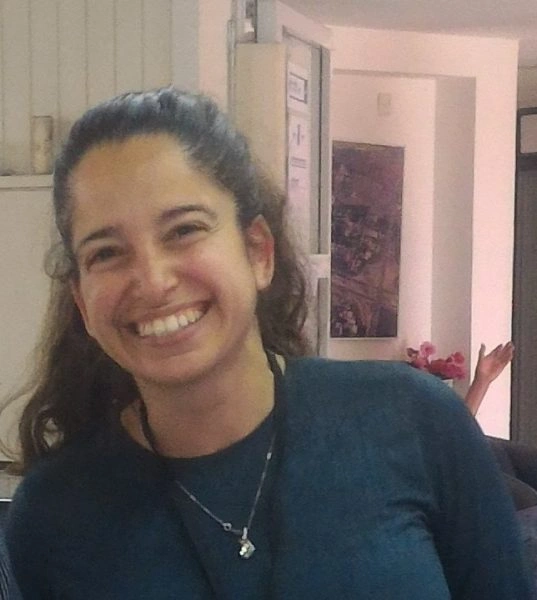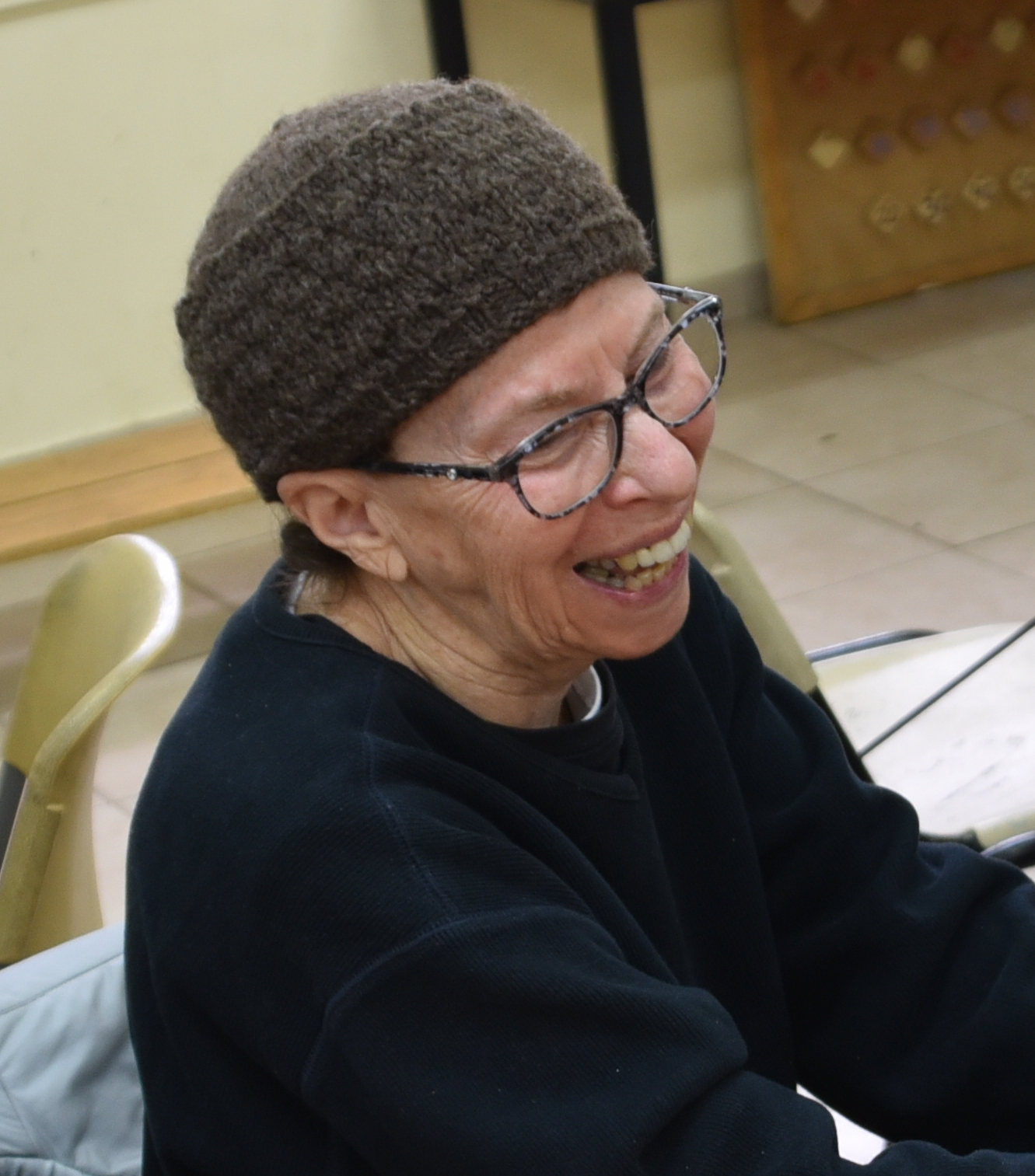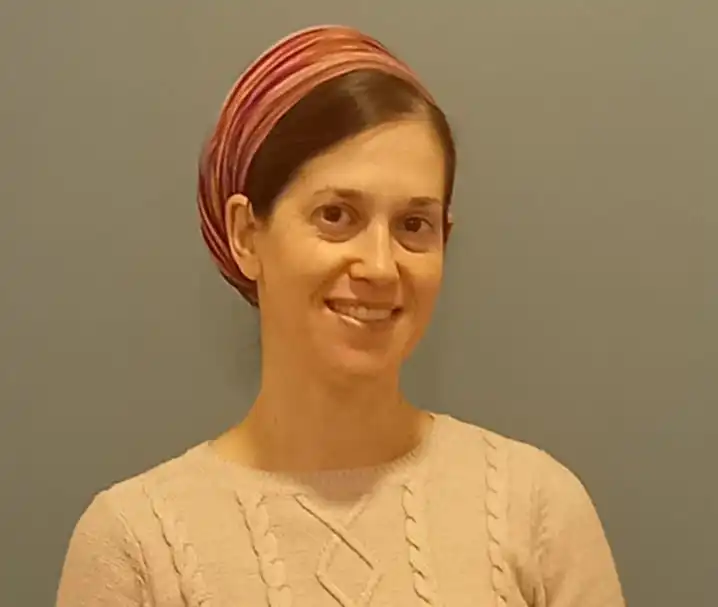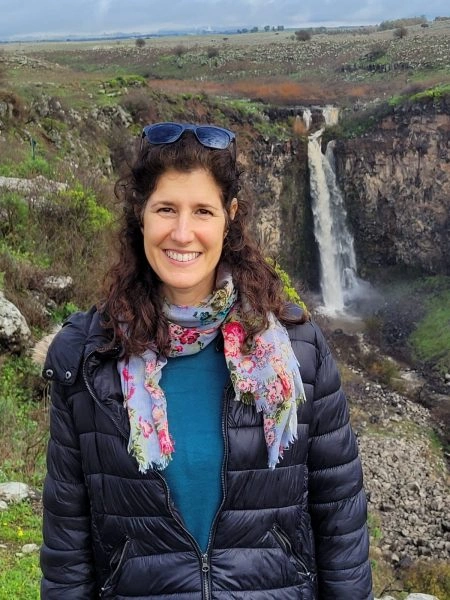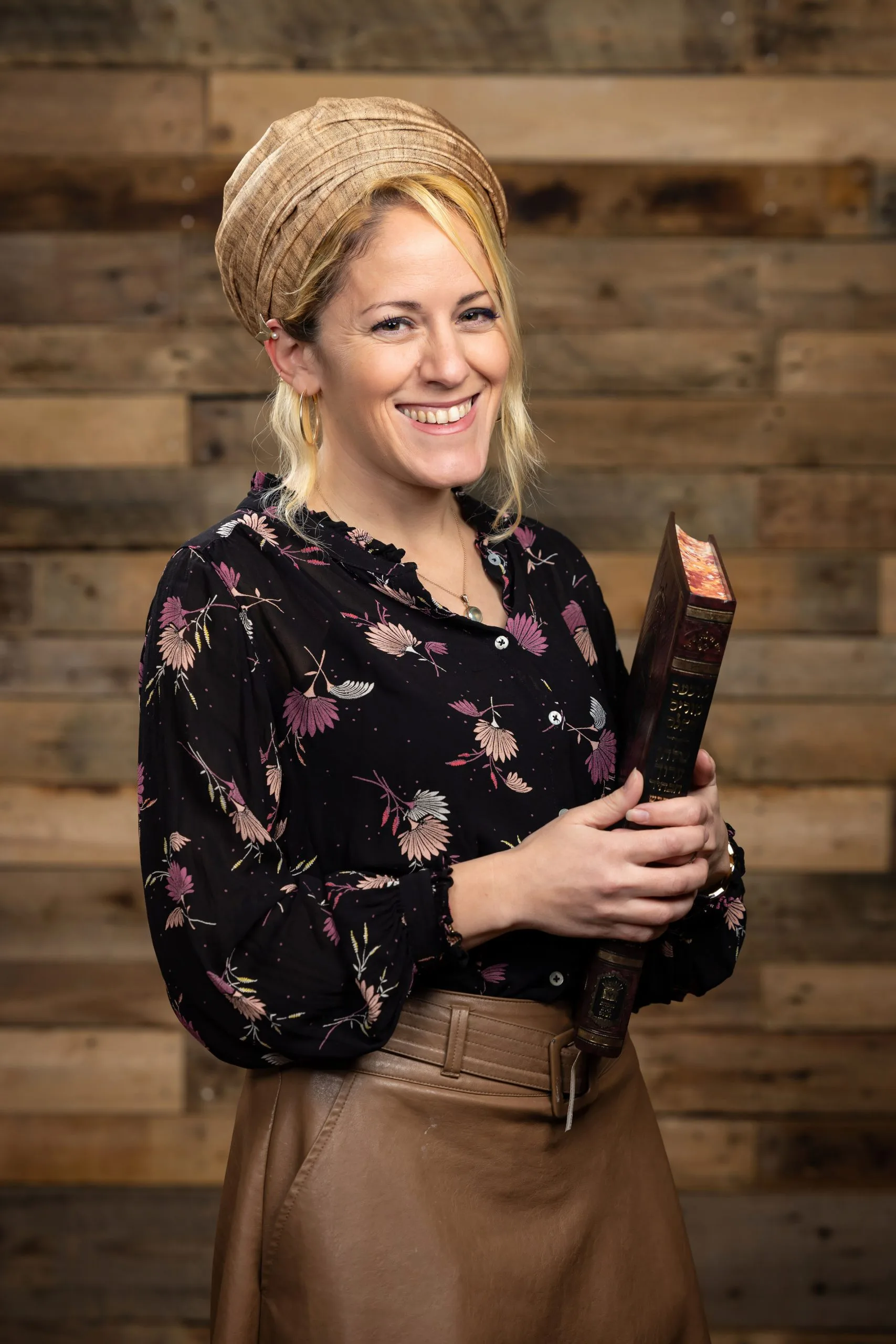מסכת זבחים
מסכת זבחים מוקדש ע”י אסתר קרמר לע”נ אביה מני גרוס.
הלימוד השבוע מוקדש ע”י רוברט ופאולה כהן לע”נ יוסף בן משה הכהן ז”ל. יוסף היה חזן שאהב מאוד לשיר, עבד קשה בחייו והיה מאוד מסור למשפחתו ולקהילה.
רוצה להקדיש שיעור?

תקציר
דם הבכור, המעשר והפסח נזרק על המזבח רק פעם אחת. הדבר נלמד מכך שהמילה "סביב” מופיעה בהקשר של עולה, חטאת ואשם, ומשמעות הדבר היא שלא ניתן ללמוד מהם למקרים אחרים, שכן פרטים שמופיעים פעמיים או שלוש אינם יכולים לשמש כבסיס לבניין אב למקרה אחר (שני כתובים הבאים כאחד אין מלמדים).
רבי טרפון לימד שניתן לאכול את הבכור במשך שני ימים ולילה אחד, משום שהוא הוקש לשלמים בויקרא יח:יח, שם מוזכרים השוק והחזה הניתנים לכהן כחלק מקורבן השלמים. רבי יוסי הגלילי, ביום הראשון שלו ביבנה, העלה מספר קושיות על ההשוואה הזו, שכן גם בקרבן תודה השוק והחזה ניתנים לכהן, והוא נאכל רק יום אחד ולילה אחד. לכן, ייתכן שיש להשוות דווקא לקרבן תודה. כאשר רבי טרפון לא הצליח להשיב על הקושיות, הוא עזב את המקום ורבי עקיבא תפס את מקומו. רבי עקיבא השתכנע מדברי רבי יוסי שיש להקיש לקורבן תודה, אך מצא מילים אחרות בפסוק שמהן ניתן להוסיף יום נוסף. כאשר רבי ישמעאל שמע על כך, הוא פתח בדיון ממושך עם רבי עקיבא על שינוי עמדתו, שלפיו ההשוואה היא לקרבן תודה. רבי ישמעאל טען שהדין של השוק והחזה בקרבן תודה נלמד מהיקש, והדין של הבכור נלמד מהשוק והחזה גם כן בהיקש, ואין ללמוד דין מהיקש על גבי היקש. אולם הגמרא מסבירה שההיקש כאן אינו רגיל, שכן הדין של השוק והחזה נלמד מהיקש, אך הגבלת הזמן נאמרה במפורש. הדיון בין רבי עקיבא לרבי ישמעאל הוא האם ניתן ללמוד דין מהיקש שמבוסס חלקית על היקש וחלקית נאמר במפורש.
הגמרא מקשה שתי קושיות על עמדתו של רבי ישמעאל – אחת לגבי מספר הפעמים שהכהן הגדול צריך לזרוק את דם הפר והשעיר בהיכל ביום הכיפורים, ואחת לגבי כמות הסולת הנדרש לכיכרות המצה הנלוות לקרבן תודה. כל אחד מהדינים הללו נלמד מהיקש על גבי היקש, יחד עם דבר שנאמר במפורש או נלמד בגזירה שווה. כל אחת מהקושיות נפתרת.
המשנה קובעת שניתן לאכול את הפסח רק עד חצות. זו דעתו של רבי אלעזר בן עזריה, אך רבי עקיבא מתיר עד עלות השחר. כל אחד מהם מבסס את עמדתו על פסוק אחר.
כלים
מסכת זבחים
מסכת זבחים מוקדש ע”י אסתר קרמר לע”נ אביה מני גרוס.
הלימוד השבוע מוקדש ע”י רוברט ופאולה כהן לע”נ יוסף בן משה הכהן ז”ל. יוסף היה חזן שאהב מאוד לשיר, עבד קשה בחייו והיה מאוד מסור למשפחתו ולקהילה.
הדף היום מוקדש לכבודם של בצלאל שוורץ והדר גרושקו ולמשפחותיהם, לרגל חתונתם שהתקיימה אמש. מזל טוב!
כלים
העמקה
רוצה להבין מה באמת קורה מתחת לפני השטח של הסוגיה?
שיעורים, פודקאסטים והרחבות של מיטב המורות שלנו יפתחו לך עוד זוויות וכיווני חשיבה.
חדשה בלימוד הגמרא?
זה הדף הראשון שלך? איזו התרגשות עצומה! יש לנו בדיוק את התכנים והכלים שיעזרו לך לעשות את הצעדים הראשונים ללמידה בקצב וברמה שלך, כך תוכלי להרגיש בנוח גם בתוך הסוגיות המורכבות ומאתגרות.
פסיפס הלומדות שלנו
גלי את קהילת הלומדות שלנו, מגוון נשים, רקעים וסיפורים. כולן חלק מתנועה ומסע מרגש ועוצמתי.
זבחים נז
וְעוֹלָה גּוּפַהּ מְנָלַן? דִּכְתִיב: ״אֶל יְסוֹד מִזְבַּח הָעוֹלָה״ – לִמֵּד עַל עוֹלַת חוֹבָה שֶׁטְּעוּנָה יְסוֹד.
The Gemara asks: And from where do we derive the halakha that a burnt offering itself has its blood presented on the altar in a place where there is a base? The Gemara answers: We derive it from a verse, as it is written: “And he shall pour all the blood of the bull at the base of the altar of the burnt offering” (Leviticus 4:7). This teaches that the blood of an obligatory burnt offering requires presentation at the base of the altar, as the verse specifically describes the base of the altar as connected to the burnt offering.
אִי – מָה לְהַלָּן שְׁתֵּי מַתָּנוֹת שֶׁהֵן אַרְבַּע, אַף כָּאן שְׁתֵּי מַתָּנוֹת שֶׁהֵן אַרְבַּע?!
The Gemara asks: If it is derived from a burnt offering via a verbal analogy, one might think that just as there, a burnt offering requires two placements that are four, so too here, a firstborn offering, an animal tithe offering, and a Paschal offering should also require two placements that are four, and not just a single placement.
אָמַר אַבָּיֵי: לְמָה לִי לְמִכְתַּב ״סָבִיב״ בְּעוֹלָה, ״סָבִיב״ בְּחַטָּאת? הָווּ שְׁנֵי כְּתוּבִין הַבָּאִין כְּאֶחָד, וְכׇל שְׁנֵי כְּתוּבִין הַבָּאִין כְּאֶחָד אֵין מְלַמְּדִין.
Abaye says: Why do I need the Torah to write: “And Aaron’s sons, the priests, shall present the blood, and sprinkle the blood around against the altar” (Leviticus 1:5), with regard to a burnt offering, to teach that the blood must be placed on all four sides of the altar, in addition to writing: “And Moses took the blood, and put it upon the corners of the altar around with his finger” (Leviticus 8:15), with regard to a sin offering? They are two verses that come as one, i.e., they teach the same matter; and any two verses that come as one do not teach their common aspect to apply to other cases. Therefore, a firstborn offering, an animal tithe offering, and a Paschal offering do not require two placements that are four.
הָנִיחָא לְמַאן דְּאָמַר אֵין מְלַמְּדִין, אֶלָּא לְמַאן דְּאָמַר מְלַמְּדִין מַאי אִיכָּא לְמֵימַר? הָוֵי אָשָׁם שְׁלֹשָׁה, וּשְׁלֹשָׁה וַדַּאי אֵין מְלַמְּדִין.
The Gemara asks: This works out well according to the one who says that two verses that come as one do not teach their common aspect with regard to other cases. But according to the one who says that two verses that come as one do teach their common aspect with regard to other cases, what is there to say? The Gemara answers: Together with the verse stated with regard to a guilt offering, there are three verses, as it is written: “And its blood shall be sprinkled around the altar” (Leviticus 7:2), and three verses which come as one certainly do not teach their common aspect with regard to other cases.
הַבְּכוֹר נֶאֱכָל לַכֹּהֲנִים. תָּנוּ רַבָּנַן: מִנַּיִן לַבְּכוֹר שֶׁנֶּאֱכָל לִשְׁנֵי יָמִים וְלַיְלָה? שֶׁנֶּאֱמַר: ״וּבְשָׂרָם יִהְיֶה לָּךְ כַּחֲזֵה הַתְּנוּפָה וּכְשׁוֹק הַיָּמִין״ – הִקִּישׁוֹ הַכָּתוּב לְחָזֶה וָשׁוֹק שֶׁל שְׁלָמִים; מָה שְׁלָמִים נֶאֱכָלִין לִשְׁנֵי יָמִים וְלַיְלָה אֶחָד, אַף בְּכוֹר נֶאֱכָל לִשְׁנֵי יָמִים וְלַיְלָה אֶחָד.
§ The mishna teaches: The firstborn offering is eaten by the priests, throughout the city of Jerusalem, prepared in any manner of food preparation, for two days and one night. The Sages taught in a baraita: From where is it derived with regard to a firstborn offering that it is eaten for two days and the intervening night? It is derived from a verse, as it is stated with regard to a firstborn offering: “And their flesh shall be yours, as the breast of waving and as the right thigh” (Numbers 18:18). The verse juxtaposes the firstborn offering with the breast and thigh of peace offerings. Just as peace offerings are eaten for two days and one night, so too, a firstborn offering is eaten for two days and one night.
וְזוֹ שְׁאֵלָה נִשְׁאֲלָה לִפְנֵי חֲכָמִים בַּכֶּרֶם בְּיַבְנֶה: בְּכוֹר לְכַמָּה נֶאֱכָל? נַעֲנָה רַבִּי טַרְפוֹן וְאָמַר: לִשְׁנֵי יָמִים וְלַיְלָה אֶחָד.
The baraita relates: And this question was asked before the Sages in the vineyard, i.e., the academy, in Yavne: For how many days and nights is a firstborn offering eaten? Rabbi Tarfon responded and said: For two days and one night.
הָיָה שָׁם תַּלְמִיד אֶחָד שֶׁבָּא לְבֵית הַמִּדְרָשׁ לִפְנֵי חֲכָמִים תְּחִלָּה, וְרַבִּי יוֹסֵי הַגְּלִילִי שְׁמוֹ, אָמַר לוֹ: רַבִּי, מִנַּיִן לָךְ? אָמַר לוֹ: בְּנִי, שְׁלָמִים קָדָשִׁים קַלִּים, וּבְכוֹר קָדָשִׁים קַלִּים; מָה שְׁלָמִים נֶאֱכָלִין לִשְׁנֵי יָמִים וְלַיְלָה אֶחָד, אַף בְּכוֹר נֶאֱכָל לִשְׁנֵי יָמִים וְלַיְלָה אֶחָד.
There was one student there who came to the study hall before the Sages for the first time, and his name was Rabbi Yosei HaGelili. He said to Rabbi Tarfon: My teacher, from where do you derive this? Rabbi Tarfon said to him: My son, peace offerings are offerings of lesser sanctity, and a firstborn offering is an offering of lesser sanctity. Just as peace offerings are eaten for two days and one night, so too, a firstborn offering is eaten for two days and one night.
אָמַר לוֹ: רַבִּי, בְּכוֹר מַתָּנָה לַכֹּהֵן, וְחַטָּאת וְאָשָׁם מַתָּנָה לַכֹּהֵן; מָה חַטָּאת וְאָשָׁם לְיוֹם וָלַיְלָה, אַף בְּכוֹר לְיוֹם וָלַיְלָה!
Rabbi Yosei HaGelili said to him: My teacher, there is a different comparison that can be made: A firstborn offering is given as a gift to the priest, and a sin offering and a guilt offering are each given as a gift to the priest. Just as a sin offering and a guilt offering are eaten for one day and one night, so too, a firstborn offering should be eaten for one day and one night.
אָמַר לוֹ: נָדוּן דָּבָר מִתּוֹךְ דָּבָר, וְנִלְמַד דָּבָר מִתּוֹךְ דָּבָר; מָה שְׁלָמִים אֵין בָּאִין עַל חֵטְא – אַף בְּכוֹר אֵינוֹ בָּא עַל חֵטְא, מָה שְׁלָמִים נֶאֱכָלִים לִשְׁנֵי יָמִים וְלַיְלָה אֶחָד – אַף בְּכוֹר נֶאֱכָל לִשְׁנֵי יָמִים וְלַיְלָה אֶחָד.
Rabbi Tarfon said to him: Let us judge a matter from a matter to which it is most similar, i.e., a firstborn offering is an offering of lesser sanctity, as are peace offerings, and learn a matter from a matter, i.e., there is another comparison to be made: Just as peace offerings do not come as atonement for a sin, so too, a firstborn offering does not come as atonement for a sin. Just as peace offerings are eaten for two days and one night, so too, a firstborn offering is eaten for two days and one night.
אָמַר לוֹ: רַבִּי, נָדוּן דָּבָר מִדָּבָר, יִלְמַד דָּבָר מִדָּבָר; חַטָּאת וְאָשָׁם מַתָּנָה לַכֹּהֵן, וּבְכוֹר מַתָּנָה לַכֹּהֵן; מָה חַטָּאת וְאָשָׁם אֵין בָּאִין בְּנֶדֶר וּנְדָבָה – אַף בְּכוֹר אֵינוֹ בְּנֶדֶר וּנְדָבָה, מָה חַטָּאת וְאָשָׁם נֶאֱכָלִין לְיוֹם אֶחָד – אַף בְּכוֹר נֶאֱכָל לְיוֹם אֶחָד!
Rabbi Yosei HaGelili said to him: My teacher, I can answer you in a similar way. Let us judge a matter from a matter to which it is most similar, i.e., a firstborn offering is more similar to a sin offering and a guilt offering, and learn a matter from a matter, i.e., there is another comparison to be made: A sin offering and a guilt offering are each given as a gift to the priest, and a firstborn offering is given as a gift to the priest. Just as a sin offering and a guilt offering do not come as a vow offering or as a gift offering, i.e., they are brought only by one obligated to bring them, so too, a firstborn offering does not come as a vow offering or as a gift offering. Just as a sin offering and a guilt offering are eaten for one day and one night, so too, a firstborn offering should be eaten for one day and one night.
קָפַץ רַבִּי עֲקִיבָא, וְנִסְתַּלֵּק רַבִּי טַרְפוֹן. אָמַר לוֹ: הֲרֵי הוּא אוֹמֵר ״וּבְשָׂרָם יִהְיֶה לָּךְ״ – הִקִּישָׁן הַכָּתוּב לְחָזֶה וָשׁוֹק שֶׁל שְׁלָמִים; מָה שְׁלָמִים נֶאֱכָלִין לִשְׁנֵי יָמִים וְלַיְלָה אֶחָד, אַף בְּכוֹר נֶאֱכָל לִשְׁנֵי יָמִים וְלַיְלָה אֶחָד.
Rabbi Akiva jumped into the discussion, and Rabbi Tarfon left. Rabbi Akiva said to Rabbi Yosei HaGelili: But the verse states: “And their flesh shall be yours, as the breast of waving and as the right thigh” (Numbers 18:18). The verse juxtaposes firstborn offerings with a breast and thigh of peace offerings. Just as peace offerings are eaten for two days and one night, so too, a firstborn offering is eaten for two days and one night.
אָמַר לוֹ: הִיקַּשְׁתּוֹ לְחָזֶה וָשׁוֹק שֶׁל שְׁלָמִים, וַאֲנִי מַקִּישׁוֹ לְחָזֶה וָשׁוֹק שֶׁל תּוֹדָה – מָה תּוֹדָה נֶאֱכֶלֶת לְיוֹם וְלַיְלָה, אַף בְּכוֹר נֶאֱכָל לְיוֹם וְלַיְלָה!
Rabbi Yosei HaGelili said to Rabbi Akiva: You juxtaposed it with a breast and thigh of peace offerings. But since the Torah does not specify with which offering the firstborn is juxtaposed, I juxtapose it with a breast and thigh of a thanks offering, which are also given to a priest. Just as a thanks offering is eaten for one day and one night, so too, a firstborn offering should be eaten for one day and one night.
אָמַר לוֹ: הֲרֵי הוּא אוֹמֵר: ״וּבְשָׂרָם יִהְיֶה לָךְ״ – שֶׁאֵין תַּלְמוּד לוֹמַר ״לְךָ יִהְיֶה״, וּמָה תַּלְמוּד לוֹמַר ״לְךָ יִהְיֶה״? הוֹסִיף הַכָּתוּב הֲוָיָה אַחֶרֶת בַּבְּכוֹר.
Rabbi Akiva said to Rabbi Yosei HaGelili: I concede that it is possible to juxtapose a firstborn offering with a thanks offering, but the verse states: “And their flesh shall be yours, as the breast of waving and as the right thigh, it shall be yours” (Numbers 18:18). Since there is no need for the verse to state a second time: “It shall be yours,” what is the meaning when the verse states a second time: “It shall be yours”? The verse adds another day on which it is permitted for a firstborn offering to be eaten, i.e., a second day.
וּכְשֶׁנֶּאְמְרוּ דְּבָרִים לִפְנֵי רַבִּי יִשְׁמָעֵאל, אָמַר לָהֶן: צְאוּ וְאִמְרוּ לוֹ לְרַבִּי עֲקִיבָא: טָעִיתָה. תּוֹדָה מֵהֵיכָן לָמְדָה – מִשְּׁלָמִים; [וְכִי] דָּבָר הַלָּמֵד בְּהֶיקֵּשׁ חוֹזֵר וּמְלַמֵּד בְּהֶיקֵּשׁ?! הָא אֵין עָלֶיךָ לִידּוֹן בְּלָשׁוֹן אַחֲרוֹן, אֶלָּא בְּלָשׁוֹן רִאשׁוֹן.
The Gemara relates: And when these matters were said before Rabbi Yishmael, he said to his students: Go out and tell Rabbi Akiva: You were mistaken when you conceded to Rabbi Yosei HaGelili that the allotted time for eating a firstborn offering could have been derived from the allotted time for eating a thanks offering. Why? From where is it derived that the breast and thigh of a thanks offering are eaten by priests? It is derived from a juxtaposition with a peace offering. Nowhere is it stated explicitly that the breast and thigh of a thanks offering are eaten only by priests. And in the realm of consecrated matters, can a matter derived via a juxtaposition then teach its halakha via a juxtaposition? The Gemara (49b) demonstrated that it cannot. Consequently, you should not infer from the latter formulation of the verse, from the words “It shall be yours,” but rather, from the first formulation of the verse, as you claimed that the Torah juxtaposes a firstborn offering with the breast and thigh of a peace offering.
וְרַבִּי יִשְׁמָעֵאל, הַאי ״לְךָ יִהְיֶה״ מַאי עָבֵיד לֵיהּ? לִימֵּד עַל בְּכוֹר בַּעַל מוּם שֶׁהוּא מַתָּנָה לַכֹּהֵן – שֶׁלֹּא מָצִינוּ בְּכׇל הַתּוֹרָה.
The Gemara asks: And what does Rabbi Yishmael do with this extra phrase: “It shall be yours”? This teaches about a blemished firstborn offering, that it is also given as a gift to the priest, as we have not found it written explicitly anywhere in the entire Torah what should be done with a blemished firstborn.
וְרַבִּי עֲקִיבָא יָלֵיף לֵיהּ מִ״בְּשָׂרָם״ – חַד תָּם וְחַד בַּעַל מוּם. וְרַבִּי יִשְׁמָעֵאל, מִ״בְּשָׂרָם״ דְּהָנָךְ בְּכוֹרוֹת קָאָמַר.
The Gemara asks: And from where does Rabbi Akiva derive that a blemished firstborn offering is also given as a gift to the priest? He derives it from the term “their flesh,” which is written in the plural. This teaches that both an unblemished firstborn offering and a blemished firstborn offering are given as gifts to the priest. The Gemara asks: And how does Rabbi Yishmael understand the plural term? The Gemara answers that he understands it to be saying that the priest receives gifts from the flesh of all these firstborn offerings mentioned in the verse, i.e., the firstborn of cattle, sheep, and goats.
בְּמַאי קָמִיפַּלְגִי? מָר סָבַר: הֵימֶנּוּ וְדָבָר אַחֵר – הָוֵי הֶיקֵּשׁ; וּמָר סָבַר: לָא הָוֵי הֶיקֵּשׁ.
The Gemara asks: Since Rabbi Akiva and Rabbi Yishmael both agree that a matter derived via a juxtaposition cannot then teach its halakha via a juxtaposition, with regard to what principle do they disagree? The Gemara answers: One Sage, Rabbi Yishmael, holds that a halakha derived both from that juxtaposition and from another principle is considered a juxtaposition. In this case, the specific detail that the breast and thigh of a thanks offering are given to a priest is derived from a juxtaposition with peace offerings. The length of time in which it may be eaten, one day and one night, is written explicitly. Since it is nevertheless considered a juxtaposition, it cannot be used to teach the halakha with regard to a firstborn offering. And one Sage, Rabbi Akiva, holds that such a case is not considered to be a juxtaposition, and therefore it can be used to teach another halakha via a juxtaposition.
בִּשְׁלָמָא לְמַאן דְּאָמַר לָא הָוֵי הֶיקֵּשׁ, הַיְינוּ דִּכְתִיב: ״וְכֵן יַעֲשֶׂה לְאֹהֶל מוֹעֵד״ –
The Gemara comments: Granted, according to the one who says that a matter derived via a juxtaposition and another principle is not considered a juxtaposition, this is the reason that it is written with regard to the rites performed by the High Priest on Yom Kippur: “And so shall he do for the Tent of Meeting that dwells with them in the midst of their impurity” (Leviticus 16:16).
כְּשֵׁם שֶׁמַּזֶּה לִפְנַי וְלִפְנִים אַחַת לְמַעְלָה וְשֶׁבַע לְמַטָּה מִדַּם הַפָּר, כָּךְ מַזֶּה בַּהֵיכָל.
The High Priest sprinkles the blood of two offerings, the bull and the goat. He sprinkles their blood between the staves of the Ark and on the Curtain separating the Sanctuary and Holy of Holies. In each location he sprinkles their blood once above and seven times below. The verse does not write all of the details of these sprinklings with regard to each offering, and the details of each are derived from what is written explicitly in the other, as follows: Just as the High Priest sprinkles in the innermost sanctum, between the staves of the Ark, once above and seven times below, with the blood of the bull, so he sprinkles on the Curtain in the Sanctuary.
וּכְשֵׁם שֶׁלִּפְנַי וְלִפְנִים אַחַת לְמַעְלָה וְשֶׁבַע לְמַטָּה מִדַּם הַשָּׂעִיר, כָּךְ מַזֶּה בַּהֵיכָל.
And just as in the innermost sanctum he sprinkles once above and seven times below, with the blood of the goat, so he sprinkles on the Curtain in the Sanctuary. This is an instance of a halakha derived both from a juxtaposition and from another principle, and the stringency that a matter derived via a juxtaposition cannot also teach its halakha via a juxtaposition is not applied in this case.
אֶלָּא לְמַאן דְּאָמַר הָוֵי הֶיקֵּשׁ, מַאי אִיכָּא לְמֵימַר? מְקוֹמוֹת הוּא דְּגָמְרִי מֵהֲדָדֵי.
But according to the one who says that this too is considered a juxtaposition, what can be said? How can these halakhot be derived? The Gemara answers: It is the locations where the blood is sprinkled that are derived from one another in the second juxtaposition. The first juxtaposition teaches one halakha, namely, that the blood of the bull and the blood of the goat are to be compared to one another. The second juxtaposition does not teach a halakha with regard to the blood of the bull and the blood of the goat per se; rather it teaches a comparison between the sprinkling performed in the Holy of Holies and the sprinkling performed in the Sanctuary. These are two unconnected juxtapositions.
וְאִיבָּעֵית אֵימָא: חוּץ מִפְּנִים בְּחַד זִימְנָא גְּמִיר.
The Gemara suggests: And if you wish, say there is a different resolution: The sprinkling outside is derived from the sprinkling inside, all at once. There are not two comparisons here, one derived from the other, but rather a single, complex juxtaposition, from which all of the relevant halakhot are derived.
בִּשְׁלָמָא לְמַאן דְּאָמַר [לָא] הָוֵי הֶיקֵּשׁ, הַיְינוּ דִּכְתִיב: ״מִמּוֹשְׁבֹתֵיכֶם תָּבִיאּוּ לֶחֶם תְּנוּפָה״ –
The Gemara comments: Granted, according to the one who says that a matter derived via a juxtaposition and another principle is not a juxtaposition, this is the reason that it is written with regard to the offering brought on Shavuot: “You shall bring out of your dwellings two wave loaves of two-tenths of an ephah; they shall be of fine flour” (Leviticus 23:17).
שֶׁאֵין תַּלְמוּד לוֹמַר ״תָּבִיאוּ״, מָה תַּלְמוּד לוֹמַר ״תָּבִיאוּ״? כֹּל שֶׁאַתָּה מֵבִיא מִמָּקוֹם (לְמָקוֹם) אַחֵר הֲרֵי הוּא כָּזֶה; מַה לְּהַלָּן עִשָּׂרוֹן לְחַלָּה, אַף כָּאן עִשָּׂרוֹן לְחַלָּה.
Since apparently there is no need for the verse to state: “You shall bring,” as it already states: “And you shall present a new meal offering to the Lord” (Leviticus 23:16), why must the verse state: “You shall bring”? It states this to teach that anything that you bring from another place that is similar to this offering, i.e., the leavened bread that accompanies a thanks offering, shall be prepared like this. Just as there, with regard to the two loaves, they must be prepared from a tenth of an ephah of flour for each loaf, so too here, each of the ten loaves of leavened bread that accompany a thanks offering must be prepared from a tenth of an ephah of flour for each loaf.
אִי – מָה לְהַלָּן שְׁנֵי עֶשְׂרוֹנִים, אַף כָּאן שְׁנֵי עֶשְׂרוֹנִים?! תַּלְמוּד לוֹמַר: ״תִּהְיֶינָה״.
If they are compared, why not say that just as there, with regard to the two loaves, the total amount of flour is two-tenths of an ephah, so too here, with regard to the ten loaves that accompany a thanks offering, the total amount of flour for all ten should be two-tenths of an ephah? To counter this comparison, the verse states: “They shall be,” to serve as a restriction and teach that only these two loaves amount to a total of two-tenths of an ephah, but the bread accompanying the thanks offering does not amount to two-tenths of an ephah.
וְלָמַדְנוּ עֲשָׂרָה לְחָמֵץ; עֲשָׂרָה לְמַצָּה מִנַּיִן? תַּלְמוּד לוֹמַר ״עַל חַלֹּת לֶחֶם חָמֵץ״ – נֶגֶד חָמֵץ הָבֵא מַצָּה.
The Gemara continues: The ten loaves accompanying a thanks offering must each be a tenth of an ephah, and this has been derived from two sources: A juxtaposition with the offering of Shavuot and another principle, which is that which the verse states concerning the thanks offering, that there must be ten leavened loaves. And we have learned that ten-tenths of an ephah is required for the ten loaves of leavened bread. From where is it derived that ten-tenths of an ephah are required for the matza which also accompanies a thanks offering? After stating that thirty matzot accompany a thanks offering, the verse states: “With cakes of leavened bread” (Leviticus 7:13), to juxtapose the matza with the leavened bread. This teaches that one must bring matza of an amount corresponding to the leavened bread. In any event, this derivation can be employed according to the one who says that a matter derived via a juxtaposition and another principle is not a juxtaposition.
אֶלָּא לְמַאן דְּאָמַר (לָא) הָוֵי הֶיקֵּשׁ, מַאי אִיכָּא לְמֵימַר? ״תָּבִיאוּ״ – יַתִּירָא הִיא.
But according to the one who says that a matter derived via a juxtaposition and another principle is a juxtaposition, and therefore it cannot then teach its halakha via another juxtaposition, what is there to say? How can the measure of flour for the matza be derived from the measure of flour for the leavened bread? The Gemara answers: The first halakha, connecting the two loaves of Shavuot to the bread accompanying a thanks offering, is not derived via a juxtaposition, but rather via a superfluous word. The term “You shall bring,” written with regard to the two loaves, is extra, and is therefore considered as if it were written explicitly with regard to the leavened bread accompanying the thanks offering. Therefore, it is possible to derive the halakha concerning matza from the halakha concerning leavened bread via a juxtaposition.
הַפֶּסַח אֵינוֹ נֶאֱכָל. מַאן תַּנָּא? אָמַר רַב יוֹסֵף: רַבִּי אֶלְעָזָר בֶּן עֲזַרְיָה הִיא. דְּתַנְיָא, רַבִּי אֶלְעָזָר [בֶּן עֲזַרְיָה] אוֹמֵר: נֶאֱמַר כָּאן ״בַּלַּיְלָה [הַזֶּה]״, וְנֶאֱמַר לְהַלָּן: ״וְעָבַרְתִּי בְאֶרֶץ מִצְרַיִם בַּלַּיְלָה הַזֶּה״;
§ The mishna teaches: The Paschal offering is eaten only at night and it is eaten only until midnight. The Gemara asks: Who is the tanna who taught this mishna? Rav Yosef said that it is Rabbi Elazar ben Azarya. As it is taught in a baraita: The verse states: “And they shall eat of the flesh on that night” (Exodus 12:8). Rabbi Elazar ben Azarya says: It is stated here: “On that night,” without stating when the night ends. And it is stated there, with regard to the plague that afflicted the firstborn Egyptians: “And I will pass through the land of Egypt on that night and I will strike every firstborn in the land of Egypt” (Exodus 12:12). With regard to the death of the firstborns the Torah states: “So said the Lord: At about midnight, I will go out into the midst of Egypt and every firstborn in Egypt shall die” (Exodus 11:4–5).
מַה לְהַלָּן עַד חֲצוֹת, אַף כָּאן עַד חֲצוֹת.
Rabbi Elazar ben Azarya continues: Just as in the verse there, the death of the firstborns occurred until midnight, as stated explicitly in the verse, so too, in the verse here, the mitzva to eat the Paschal offering continues until midnight but not beyond.
אָמַר לוֹ רַבִּי עֲקִיבָא, וַהֲלֹא כְּבָר נֶאֱמַר: ״וַאֲכַלְתֶּם אוֹתוֹ בְּחִפָּזוֹן״ – עַד שְׁעַת חִפָּזוֹן!
Rabbi Akiva said to Rabbi Elazar ben Azarya: But isn’t it already stated: “And so you shall eat it, with your loins girded, your shoes on your feet, your staffs in your hands, and you will eat it in haste, for it is the Paschal offering for the Lord” (Exodus 12:11)? This verse indicates that the Paschal offering may be eaten until the time of haste, i.e., until dawn, as the Jewish people left Egypt hastily the next morning.
אִם כֵּן, מָה תַּלְמוּד לוֹמַר ״בַּלַּיְלָה הַזֶּה״? שֶׁיָּכוֹל יְהֵא כְּכׇל הַקֳּדָשִׁים הַנֶּאֱכָלִים בַּיּוֹם; תַּלְמוּד לוֹמַר ״בַּלַּיְלָה״ – בַּלַּיְלָה יְהֵא נֶאֱכָל, וְאֵינוֹ נֶאֱכָל בַּיּוֹם.
The Gemara asks: If so, why must the verse state: “On that night,” with regard to eating the Paschal offering? The Gemara explains: This phrase is necessary, as one might have thought that the Paschal offering is like all the other offerings in that it should be eaten during the day, on the day it is sacrificed. To counter this reasoning, the verse states: “On that night,” to emphasize that this particular offering shall be eaten at night, but it shall not be eaten during the day.
אֲמַר לֵיהּ אַבָּיֵי: וּמִמַּאי דְּרַבִּי אֶלְעָזָר בֶּן עֲזַרְיָה, וּדְאוֹרָיְיתָא? דִּלְמָא דְּרַבָּנַן, וּלְהַרְחִיק מִן הָעֲבֵירָה! אִם כֵּן, מַאי ״אֶלָּא עַד חֲצוֹת״? אֶלָּא כִּי הָתָם – מָה הָתָם דְּאוֹרָיְיתָא, אַף כָּאן נָמֵי דְּאוֹרָיְיתָא.
Abaye said to Rav Yosef: And from where do you know that the mishna represents the opinion of Rabbi Elazar ben Azarya, and is stating that the Paschal offering must be eaten by midnight by Torah law? Perhaps the mishna is in accordance with the opinion of Rabbi Akiva, and is stating that the Paschal offering must be eaten by midnight by rabbinic law, and the reason for the rabbinic decree was to distance one from a sin. Rav Yosef replied: If so, what does the mishna mean when it says: It is eaten only until midnight? With regard to the other offerings the mishna teaches: Until midnight, without specifying: Only. Rather, one must say that it is like there, with regard to the other halakhot of the Paschal offering stated in the mishna. Just as there, the requirements are by Torah law, so too here, with regard to the final time for eating the meat, the requirement is also by Torah law.
הֲדַרַן עֲלָךְ אֵיזֶהוּ מְקוֹמָן
